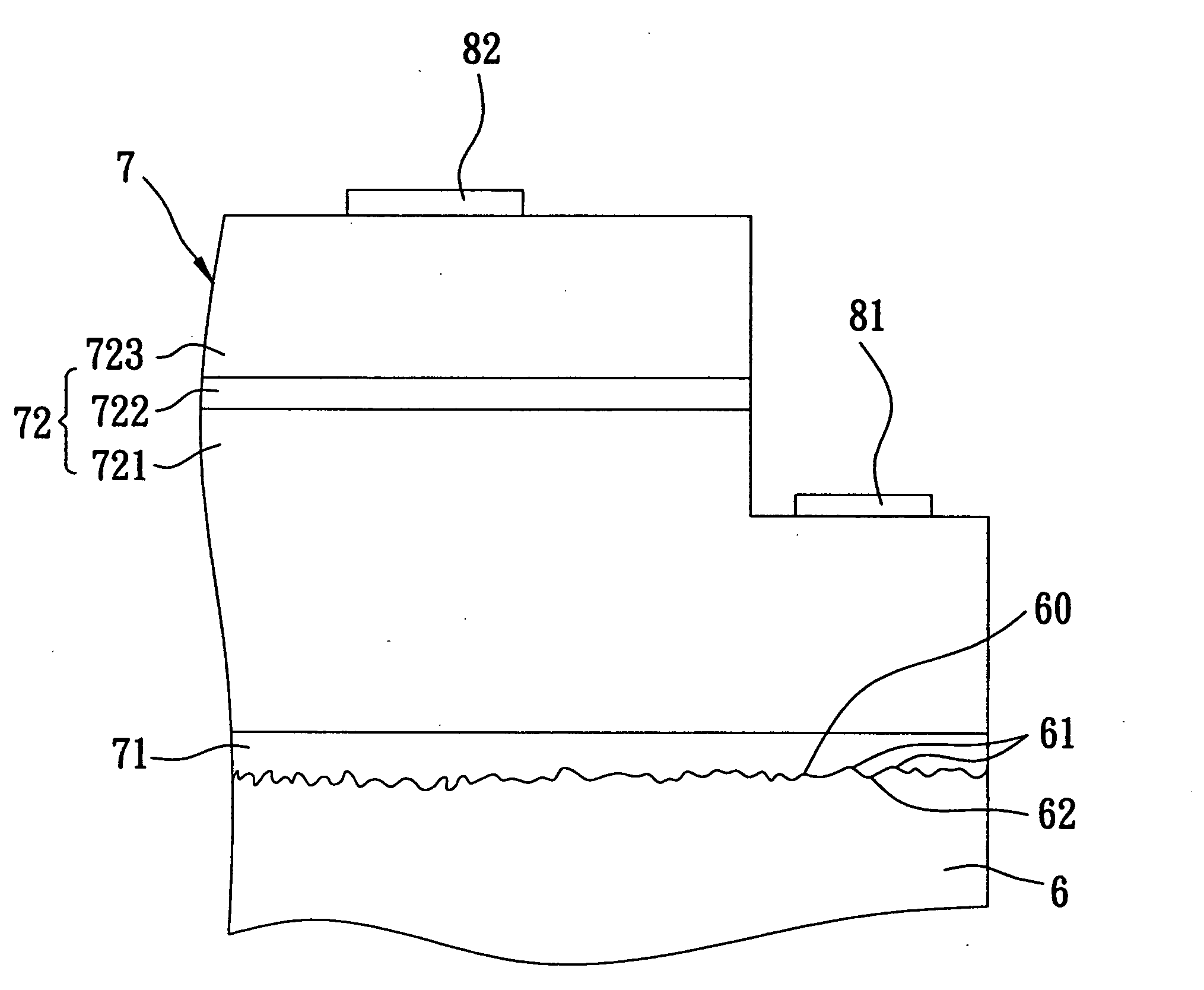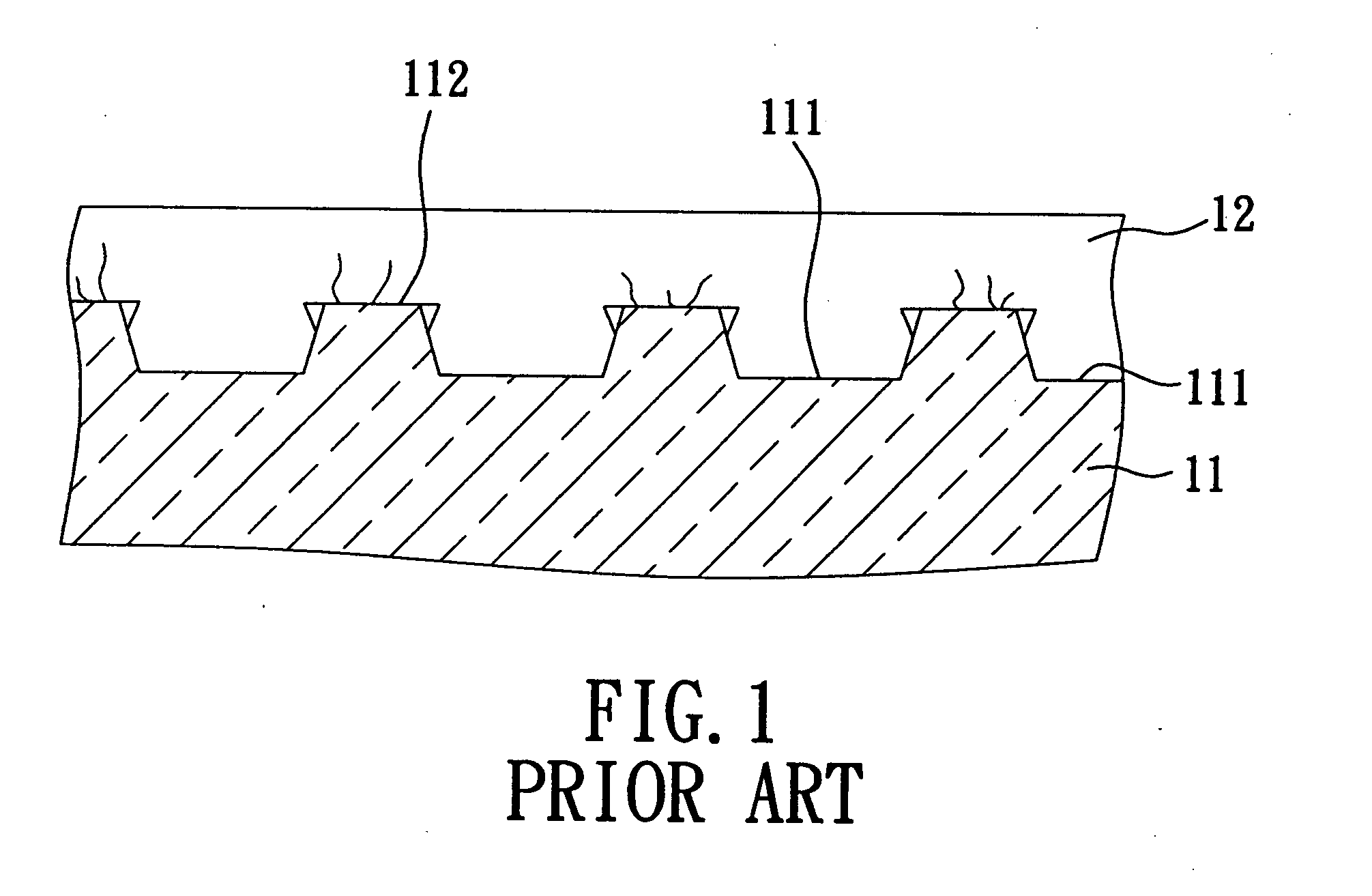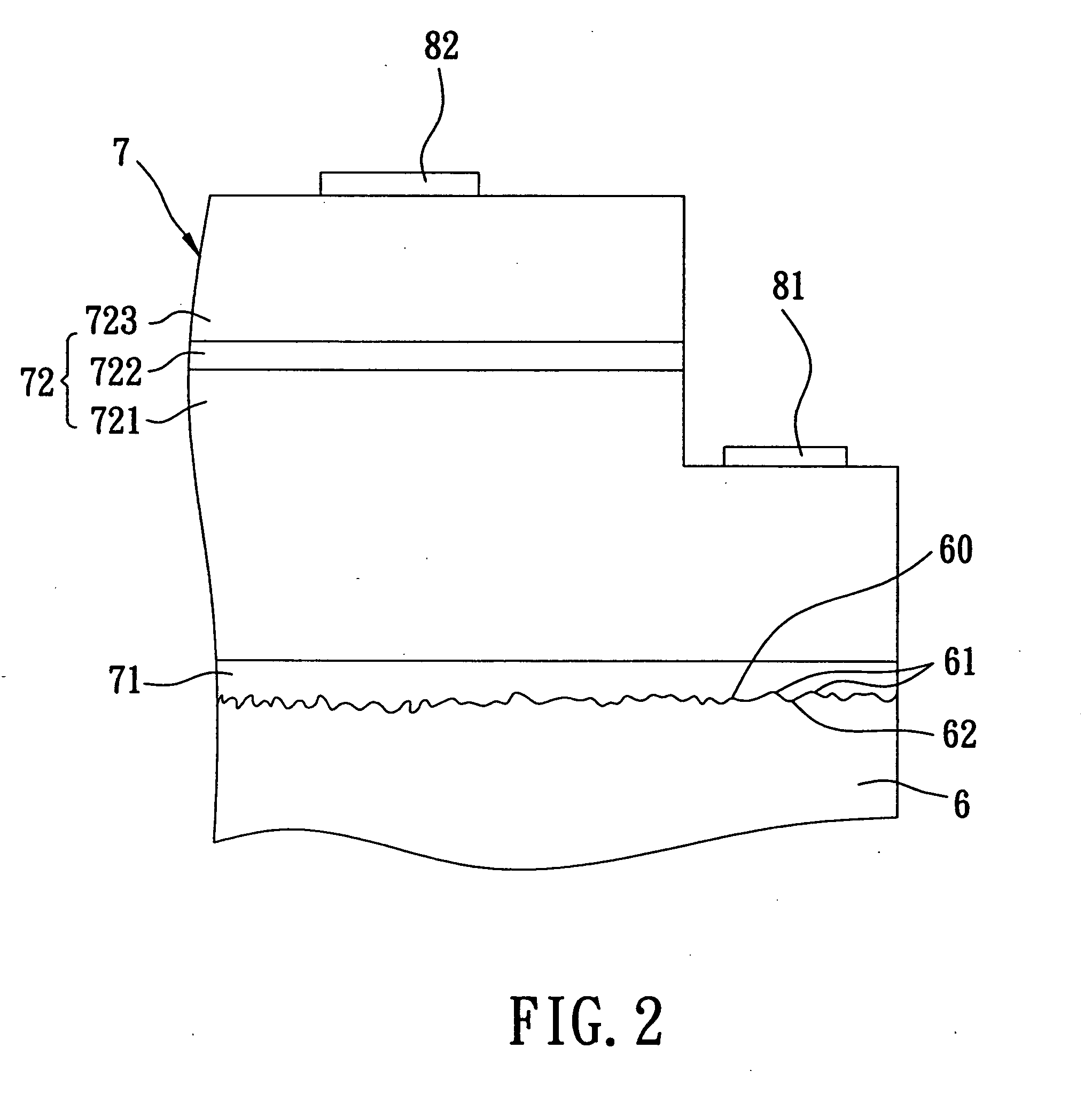Light emitting device and method for making the same
a technology of light-emitting diodes and diodes, which is applied in the manufacture of semiconductor/solid-state devices, semiconductor devices, electrical apparatus, etc., can solve the problems of hardly providing and cannot provide further enhancement in the reduction of threading dislocation density. achieve the effect of low threading dislocation density
- Summary
- Abstract
- Description
- Claims
- Application Information
AI Technical Summary
Benefits of technology
Problems solved by technology
Method used
Image
Examples
example 1
[0034]The light emitting diode of Example 1 was prepared by the following steps.
[0035]A Ni film serving as the mask layer 9 and having a layer thickness of 30 nm was formed on a sapphire substrate 6 using e-beam evaporation techniques at a working temperature of 600° C. The Ni film thus formed was subjected to annealing treatment at an annealing temperature of 600° C. for 10 minutes for permitting atomic migration which led to roughening of the Ni film. The layered structure was then subjected to reactive ion etching (RIE) for removing the Ni film and roughening the sapphire substrate 6. FIG. 6 is an atomic force microscopic (AFM) graph showing a roughened surface of the roughened sapphire substrate 6 with the ridges 61 and valleys 62. The roughness (Ra) of the roughened surface of the sapphire substrate 6 was measured, and was about 10 nm. The roughened sapphire substrate 6 was then placed into a MOCVD system into which a reactant mixture of (CH3)3Ga (TMG):NH3 (gas flow rate ratio=...
example 2
[0036]The light emitting diode of Example 2 was prepared by steps similar to those of Example 1, except that the Ni film formed on the sapphire substrate 6 had a layer thickness of 500 nm, and that the Ni film was removed and the sapphire substrate 6 was roughened using sandblasting techniques under a working pressure of 100 g / cm2 for 5 seconds. SiO2 beads having particle diameters 20 μm, 10 μm, and 5 μm in a ratio of 1:1:1 were used, and the distance between the bead outlet of the nozzle and the Ni film was set at 20 cm. The roughness (Ra) of the roughened surface of the sapphire substrate 6 was measured, and was about 10 nm.
example 3
[0037]The light emitting diode of Example 3 was prepared by steps similar to those of Example 1, except that the Ni film was dispensed with for this Example, and that the sapphire substrate 6 was directly roughened using sandblasting techniques under a working pressure of 2 Kg / cm2 for 60 seconds. SiO2 beads having particle diameters 50 μm, 20 μm, and 10 μm in a ratio of 1:1:1 were used, and the distance between the bead outlet of the nozzle 200 and the Ni film was set at 15 cm. The roughness (Ra) of the roughened surface of the sapphire substrate 6 was measured, and was about 15 nm.
[0038]By forming the epitaxial substrate 6 with the ridges 61 and valleys 62, and by roughening each ridge 61 or each valley 62 with a teeth-like profiled ridgeline according to the method of the present invention, the aforesaid drawbacks associated with the prior art can be eliminated.
PUM
 Login to View More
Login to View More Abstract
Description
Claims
Application Information
 Login to View More
Login to View More - R&D
- Intellectual Property
- Life Sciences
- Materials
- Tech Scout
- Unparalleled Data Quality
- Higher Quality Content
- 60% Fewer Hallucinations
Browse by: Latest US Patents, China's latest patents, Technical Efficacy Thesaurus, Application Domain, Technology Topic, Popular Technical Reports.
© 2025 PatSnap. All rights reserved.Legal|Privacy policy|Modern Slavery Act Transparency Statement|Sitemap|About US| Contact US: help@patsnap.com



